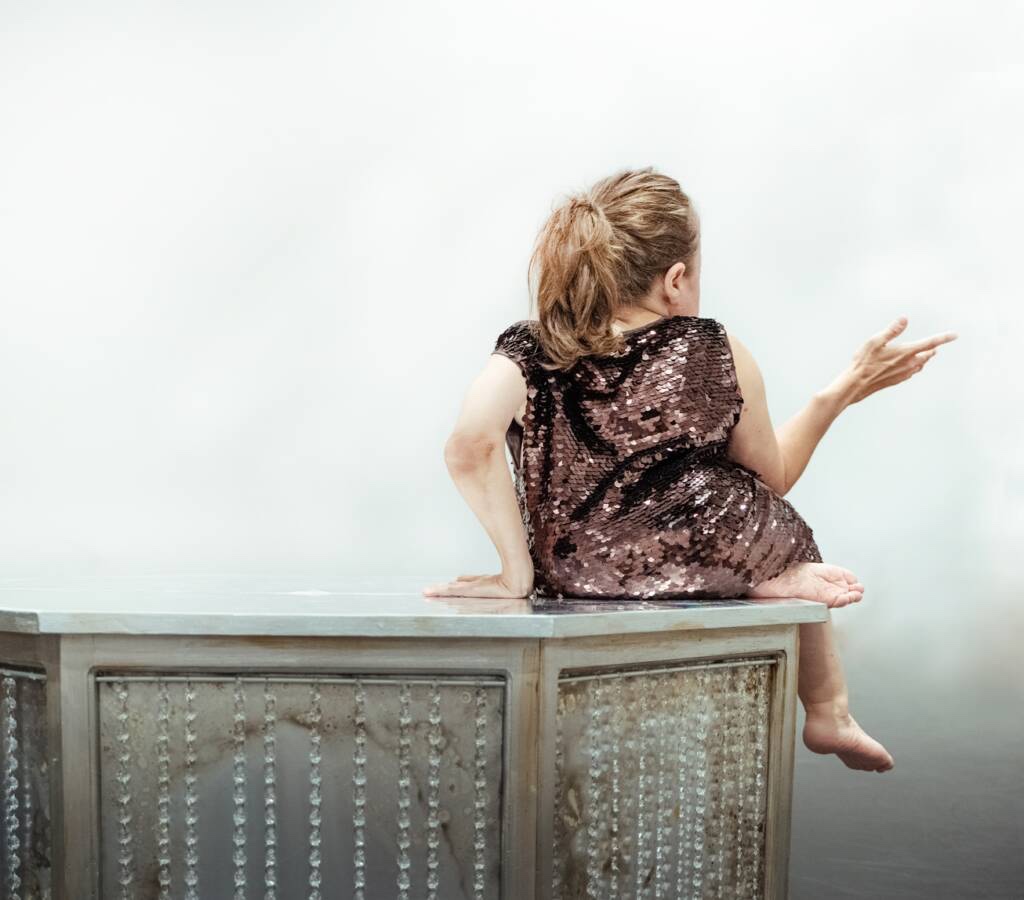Words by Giordana Patumi.
What remains today of a choreographic work considered a milestone in the history of Western dance at the beginning of the 20th century? In what forms and in what bodies has it survived over time? Who takes up its legacy and why? In which cultural and geographical contexts can it re-emerge? How has it been transformed by the many reinterpretations that have taken place over more than a century? How does it resonate with today’s choreographers and what values can it convey in the future?
The project Swans Never Die, programmed by Gender Bender Festival in Bologna, Italy, invites the audience to think of The Death of the Swan, a solo considered a milestone in the history of 20th century dance, as an opportunity to learn about styles, techniques, identities and cultures. The project’s partner institutions offer a joint programme (in presence and online) that offers performances, workshops, meetings with the artists, webinars and artistic residencies to invite the public to discover the different possibilities of following in the footsteps of a classic through its contemporary reinterpretations. Traversing the stages of this journey through history and memory, the audience discovers the many forms of existence the dance has taken over time since it was choreographed by Michel Fokine for Anna Pavlova in 1905.
Gender Bender is an international festival introducing the Italian public to the new imagery related to gender identities, sexual orientations and body representations stemming from contemporary culture. Gender Bender offers a series of events ranging from film showings, to theatrical productions and dance performances, visual arts exhibitions, installation, round tables and conferences, live concerts and performances by musicians and djs, and clubbing events.
Three works were programmed as part of Swans Never Die: Open Drift by Philippe Kratz, L’Animale by Chiara Bersani and Peso Piuma by Silvia Gribaudi. Together with the dramaturg Greta Pieropan the artists present to the public an imagery linked to the swan that opens up new and personal choreographies.
Philippe Kratz opens the evening with Open Drift, a piece for two performers in which he attempts to capture every transition and transformation, every single moment of passage. “If I could imagine a way to remain perpetually in transition, in the disconnected and the unknown, I could remain in a state of perpetual freedom,” says Philippe Kratz, who in his reinterpretation of the swan starts from the concept of transition as an element inherent in the flow of existence.
This transiting takes shape in two bodies that meet by chance in the flow of their lives, before setting off again and each wandering towards unknown directions, after having experienced the life of the other. They are like swans wandering on the water, meeting and separating.
In L’Animale, Chiara Bersani investigates the soul as a place of movement and transformation. In approaching the concept of a ‘swan’ she decides to go ask a question: What happens when we look into the deep night and recognise ourselves through song? The soul is like an aviary full of birds. It is a place where movement, colors, the movement of air and intentions become the flesh of what has been, of what grows, changes, dies out, turns into a ghost.
Silvia Gribaudi closes the evening with Peso Piuma. The piece unpicks the intimacy of the body; the reconstruction of new movements with fatigue and happiness, repeating those arms and that broken neck typical of Pavlova. Silvia Gribaudi invites the audience to explore the intimacy of the body and the abandonment to physicality that in her vision characterises the Death of the Swan. The choreographer, drawing on the imagery of Pavlova’s broken neck, chooses to mould and form a swan that is both light and powerful.
The Death of the Swan continues to interweave the past, present and future, and nourish the imaginations of generations of artists, stimulating new reflections on what we inherit from history. It also looks at how dance travels through time through the incorporated visual, emotional and kinaesthetic memory of dancers and spectators. It is a journey therefore, through the past and future history of dance, to discover how a classic still inspires choreographers and manages to speak to the public: immortal, just like the swans who “never die”.
Header image: Rebecca Lena.
About the artists:
Philippe Kratz is a choreographer and dancer born in Germany. At a young age he worked as a performer in Bühnenkuns, a project of the Tanztheater Suheyla Ferwer. He trained as a dancer at the École Supérieure de danse du Québec in Montreal and later at Berlin’s State Ballet School. He joined Xin Peng Wang’s Ballett Dortmund and in 2008, at the invitation of director Cristina Bozzolini, became part of Aterballetto in Reggio Emilia. He has received several international awards and in 2020 he was awarded as Choreographer of the Year by the magazine Danza&Danza.
Chiara Bersani is an Italian artist active in the fields of visual and performing arts. Her educational path is mainly in the field of theatrical research with contaminations from contemporary dance and Performing Art. She has collaborated with important realities of the European contemporary scene including Alessandro Sciarroni / Corpoceleste_C.C., Rodrigo Garcia, Jérôme Bel and eBabilonia Teatri. Since 2016 she has been collaborating on several projects with choreographer Marco D’Agostin. She has received several national awards and in 2019 she won the Ubu Award as best actress Under35.
Silvia Gribaudi is an Italian choreographer active in the performing arts. Since 2004 she has focused her artistic research on the social impact of the body, placing comedy and the relationship between audience and performer at the centre of the choreographic language. She has received several national and international awards including the Premio Giovane Danza D’Autore with “A CORPO LIBERO” (2009), Premio DANZA&DANZA 2019 as best Italian production with GRACES and in 2021 she is the winner of the Premio Hystrio – Corpo a Corpo.
